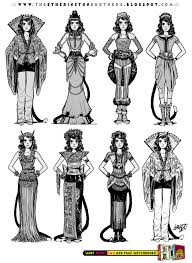The Artistry of Costume Designs: Bringing Characters to Life on Stage

The Art of Costume Designs
Costume design is a vital component of any theatrical production, as it plays a crucial role in bringing characters to life and enhancing the overall visual appeal of the performance. A well-crafted costume can convey a character’s personality, background, and motivations, helping actors fully immerse themselves in their roles.
Costume designers are tasked with creating outfits that not only reflect the time period and setting of the play but also align with the director’s vision for the production. They must consider factors such as colour schemes, fabric choices, and accessories to ensure that each costume complements the character wearing it.
Furthermore, costume designs can serve as storytelling devices, providing subtle cues to the audience about a character’s journey or relationships with other characters. For example, changes in a character’s outfit throughout the play can signify personal growth or transformation.
In addition to aesthetics, practicality is also a key consideration in costume design. Costumes must allow actors to move comfortably on stage while remaining durable enough to withstand multiple performances. Attention to detail is paramount, as even small elements like buttons or jewellery can contribute to the authenticity of a character’s portrayal.
Ultimately, costume designs are an integral part of the theatrical experience, enhancing performances and transporting audiences into the world of the play. The artistry and craftsmanship behind each costume bring depth and richness to characters, helping to create a truly immersive and memorable theatre-going experience.
Five Essential Tips for Creating Authentic and Cohesive Costume Designs
- Research the historical context of the costume to ensure authenticity.
- Consider the character’s personality and background when designing their costume.
- Pay attention to details such as fabrics, colours, and accessories to enhance the overall look.
- Ensure that the costume allows for movement and comfort for the actor wearing it.
- Collaborate with other members of the production team to ensure that the costume fits cohesively with the overall design concept.
Research the historical context of the costume to ensure authenticity.
Researching the historical context of a costume is a crucial tip in costume design to ensure authenticity and accuracy. By delving into the time period and cultural background of the characters, costume designers can create outfits that not only look visually appealing but also reflect the nuances of the era. Attention to historical detail helps in capturing the essence of the characters’ identities and societal roles, enhancing the overall storytelling and immersive experience for both actors and audience members.
Consider the character’s personality and background when designing their costume.
When designing costumes for a theatrical production, it is essential to consider the character’s personality and background. The costume should not only reflect the time period and setting of the play but also convey subtle nuances about the character’s traits and history. By carefully selecting colours, fabrics, and styles that align with the character’s persona, costume designers can create outfits that enhance the actor’s performance and provide valuable insights into the character’s motivations and relationships within the story. A well-crafted costume that captures the essence of a character can significantly enrich the audience’s understanding and emotional connection to the narrative unfolding on stage.
Pay attention to details such as fabrics, colours, and accessories to enhance the overall look.
When delving into costume design, it is crucial to pay meticulous attention to details such as fabrics, colours, and accessories. These elements are not merely embellishments but serve as essential tools in enhancing the overall aesthetic and authenticity of a character’s attire. The choice of fabric can convey texture and drape, adding depth to the costume design. Colours can evoke mood and symbolism, enriching the visual storytelling aspect of the character. Furthermore, thoughtfully selected accessories can provide further insight into a character’s personality and background, elevating the overall look to a new level of sophistication and coherence. By focusing on these intricate details, costume designers can truly bring characters to life on stage.
Ensure that the costume allows for movement and comfort for the actor wearing it.
When designing costumes for a theatrical production, it is essential to prioritise the comfort and freedom of movement for the actors wearing them. A well-designed costume should not restrict the performer’s ability to express themselves physically or inhibit their movements on stage. Ensuring that costumes are comfortable and allow for ease of movement not only enhances the actor’s performance but also contributes to their overall confidence and presence on stage. By paying attention to these practical considerations, costume designers can create outfits that not only look visually striking but also support the actors in delivering their best performances.
Collaborate with other members of the production team to ensure that the costume fits cohesively with the overall design concept.
Collaboration with other members of the production team is essential when designing costumes for a theatrical production. By working closely with directors, set designers, and lighting technicians, costume designers can ensure that the costumes fit cohesively with the overall design concept of the play. This collaborative approach allows for a seamless integration of costumes into the visual and thematic elements of the production, enhancing the storytelling and creating a unified aesthetic that elevates the audience’s experience. Effective communication and coordination among team members are key to achieving a harmonious balance between costumes and other design elements, resulting in a more impactful and immersive theatrical presentation.
Tags: accessories, artistry and craftsmanship, attention to detail, authenticity, character's journey, characters, colour schemes, comfortability on stage, costume design, costume designers, costume designs, director's vision, durability, fabric choices, immersive experience, personal growth, practicality, relationships, setting, storytelling devices, theatrical production, time period, transformation, visual appeal